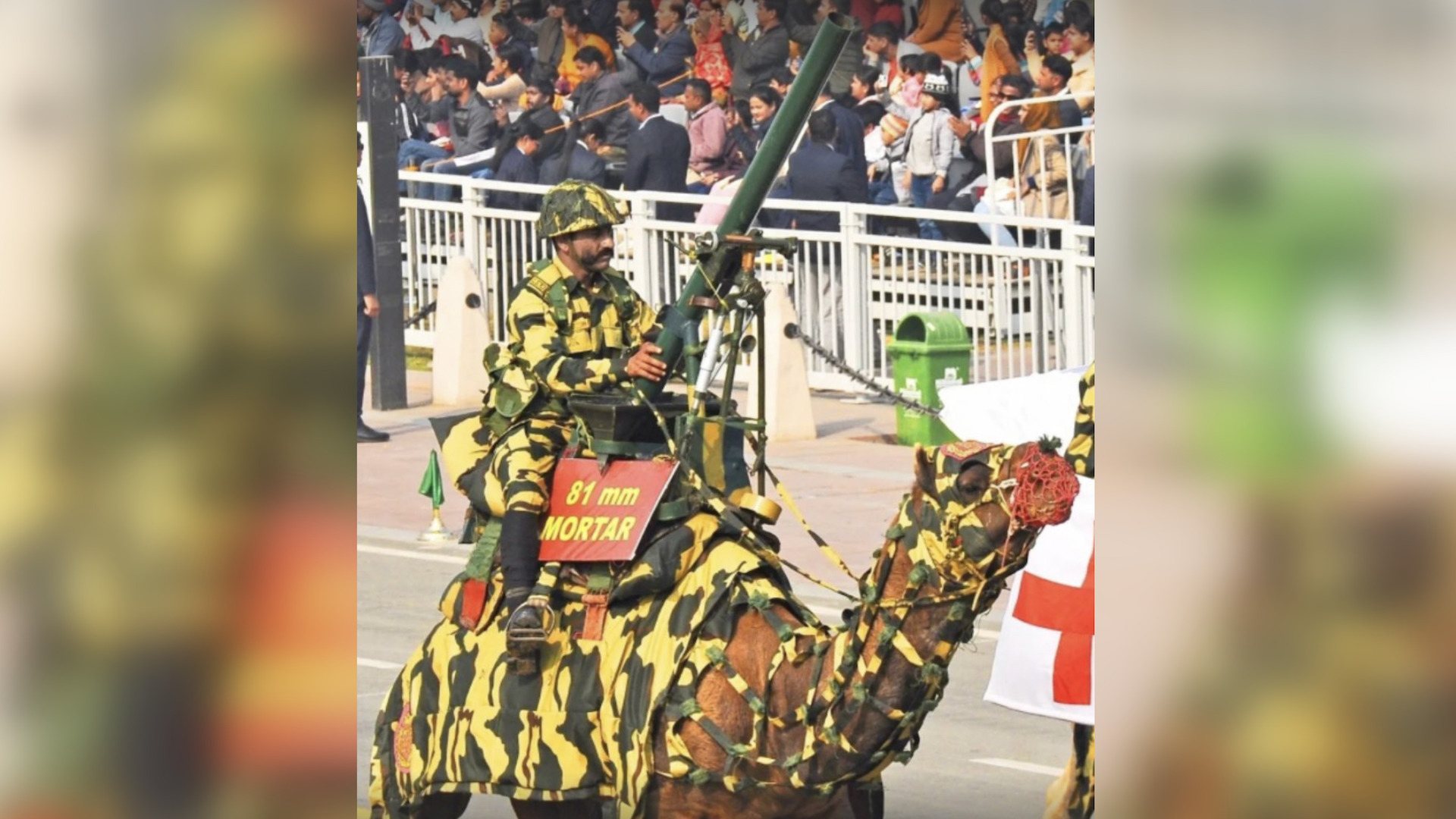

The U.S. military had the Union Army Camel Corps in the 1860s. The British military launched an Imperial Camel Corps in World War I. Now, the Indian military is flaunting its own storied camel contingent — if you can see them, that is.
As part of India’s Republic Day celebration, dozens of Dromedary camels from the military’s Border Security Force marched through the streets of Delhi as part of the independence day’s annual parade festivities.

Camel cavalry has been a fixture of the Indian military since the late 19th century when Maharaja Ganga Singh founded the Bikaner Camel Corps. While the Border Security Force’s camel contingent has participated in the Republic Day parade since 1976, this year’s march was especially noteworthy for including female riders for the first time ever.
But while many of the Border Security Force’s camels appeared decked out in their ceremonial trappings, another batch of camels marched through the streets of Delhi in more unusual attire: wearing jungle camo and carrying 81mm mortar systems and other weapons.
The inclusion of jungle camo and mortar systems seems like overkill for a military parade, if there is such a thing. First, while jungles and forest ecosystems that might make jungle camo appropriate make up 25 percent of India’s environment, camels are native to (and likely best suited for) sprawling desserts and treeless steppes, making the decision to shroud them in jungle camo as thoughtful a choice as deploying U.S. troops with woodland camo to Iraq.
Indeed, Outlook India reported that the 46 non-band armed camels of the BSF are used by personnel “for patrolling along the Thar desert running along the Indo-Pak international border in Rajasthan,” again making the incorporation of jungle camo a seemingly illogical choice.
And then there’s the mortar system, which appears to be mounted on the hump of the Dromedary. Can an animal’s hump absorb the recoil of an 81 mm mortar system easily? Because the Border Security Forces may well find out at some point — and it won’t be pretty.
Subscribe to Task & Purpose Today. Get the latest military news, entertainment, and gear in your inbox daily.
All this said, using pack animals to haul heavy weapons over terrain that might prove eminently inhospitable to wheeled or tracked vehicles isn’t the worst idea. Indeed, the Army rolled out a guide to mounted warfare for Special Forces soldiers in 2004 in the aftermath of the successful “horse soldier” incursion into Afghanistan following the Sept. 11, 2001 terror attacks.
And adopting pack animals has made perfect sense for Indian troops patrolling the high-altitude border between India and China, where tensions have grown in recent years. The Indian armed forces is even experimenting with using double-humped Bactrian camels explicitly to haul “infantry paraphernalia” along the so-called ‘Line of Actual Control’” border demarcation in eastern Ladakh, as India Today reported in 2021.
Listen, we get it: most military demonstrations around the world come with their own unique brand of pageantry, and having uniformed personnel brandish small arms astride the hump of a Dromedary is certainly one way to flaunt how badass your armed forces are. It beats the hell out of breakdancing or cardboard “powered armor,” anyway.
The latest on Task & Purpose
- The Navy wiped the ‘Top Gun: Maverick’ director’s camera after he ‘captured something I wasn’t supposed to capture’
- Marine under investigation after viral video showed altercation with hotel staff
- Fighter pilot to receive Navy Cross more than 70 years after classified dogfight with 7 Soviet jets
- 2 Navy commanders fired in one day
- The Marines have a new ship-killing weapons system to counter China
Want to write for Task & Purpose? Click here.
